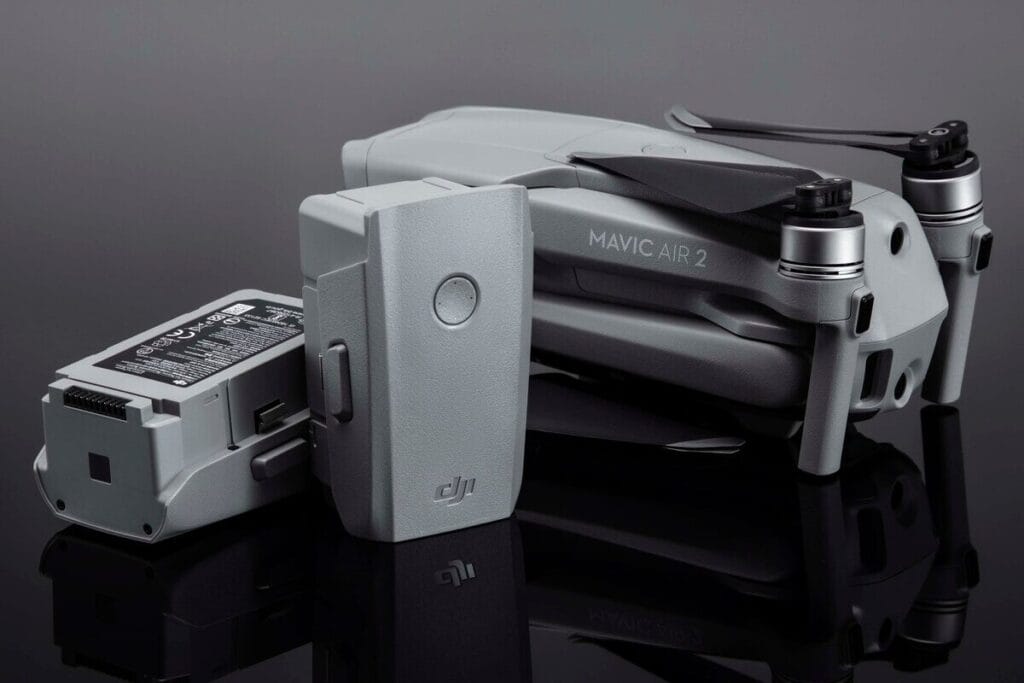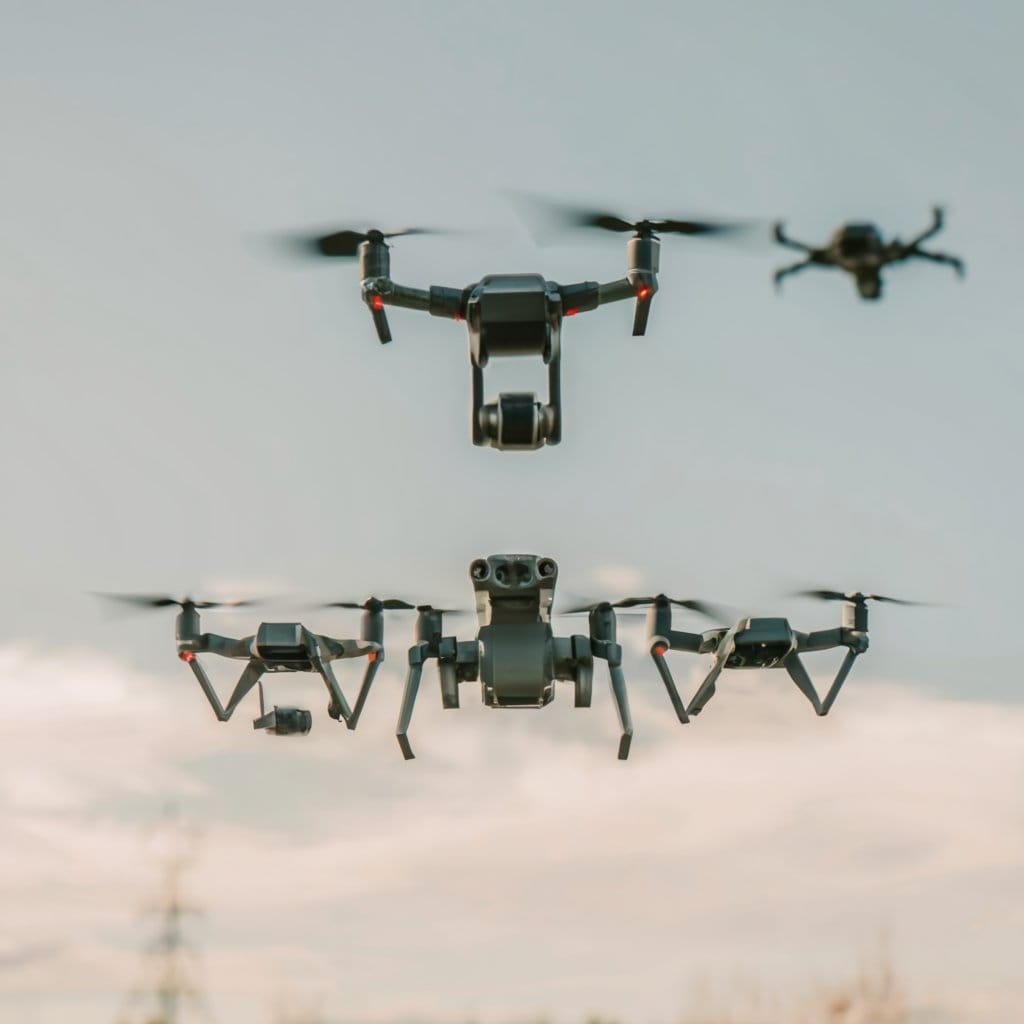Drone technology has revolutionized various industries, offering unparalleled versatility and efficiency. One crucial aspect that dictates a drone’s performance is its battery life. The evolution of drone batteries has been pivotal in extending flight times and enhancing overall capabilities. Understanding the intricacies of drone batteries is essential for maximizing the potential of these aerial devices. From lithium-polymer to lithium-ion batteries, the advancements have significantly improved endurance and power delivery, catering to diverse user needs. Exploring the nuances of drone batteries sheds light on optimizing flight experiences and achieving operational objectives effectively.

Exploring Drone Battery Types
Lithium Polymer

Lithium Polymer (LiPo) batteries are a favored choice in the drone industry due to their impressive high energy density and lightweight characteristics. These batteries offer significantly longer flight durations in comparison to other battery types commonly utilized in drones. However, it is crucial to exercise special care and precautions during the charging and storage processes of LiPo batteries to prevent potential damage or hazardous accidents from occurring.
LiPo batteries are available in a diverse range of configurations, which are denoted by numerical values such as “3S” or “4S,” indicating the specific number of cells connected in a series arrangement within the battery pack. To safely charge a LiPo battery, it is essential to utilize a compatible balance charger that is correctly configured with the appropriate voltage and current settings specific to the battery’s specifications. Failure to adhere to proper charging practices, such as overcharging or excessively discharging the battery, can result in a significant reduction in the battery’s overall lifespan or even pose serious fire hazards, making it imperative to follow recommended guidelines diligently.
Nickel-Cadmium

Nickel-Cadmium (NiCd) batteries were once a prevalent choice for powering drones, but they have been largely superseded by newer and more advanced battery technologies due to their relatively lower energy density and higher weight characteristics. Despite their shortcomings, these batteries are renowned for their exceptional robustness and remarkable ability to withstand and operate in extreme temperature conditions, making them a viable option for certain niche applications where these attributes are of paramount importance.
However, NiCd batteries are susceptible to a phenomenon known as the “memory effect,” a condition where the battery gradually loses its overall capacity if it is not fully discharged before being recharged. To mitigate this issue and ensure optimal performance, proper maintenance protocols must be diligently followed, which involve periodically subjecting the batteries to complete discharge cycles followed by thorough recharging processes. This meticulous approach helps to maintain the battery’s maximum potential and longevity, preventing premature degradation or capacity loss over time.
Lithium-Ion

Lithium-Ion (Li-ion) batteries represent a well-balanced compromise between energy density, weight, and safety considerations, making them a popular choice in various applications, including consumer electronics and certain drone models. These batteries are favored for their stable performance characteristics and relatively low maintenance requirements compared to other battery types. Li-ion batteries offer a compelling combination of robust power output capabilities while adhering to higher safety standards than their Lithium Polymer (LiPo) counterparts.
One of the key advantages that sets Li-ion batteries apart is their longer lifespan, enabling them to deliver consistent performance over an extended period compared to LiPo batteries. Additionally, Li-ion batteries exhibit better tolerance for overcharging and over-discharging scenarios, significantly reducing the risk of potentially hazardous accidents or incidents during operation. This inherent resilience contributes to enhanced safety and peace of mind for users, particularly in applications where batteries are subjected to demanding conditions or frequent charge-discharge cycles.
Furthermore, Li-ion batteries boast a lower propensity for self-discharge, ensuring that they retain a greater portion of their stored energy even when not in use for prolonged periods. This attribute translates to increased convenience and reduced maintenance requirements, as the batteries remain readily available for deployment without the need for frequent recharging cycles to replenish lost capacity.
Lead-Acid

Lead-Acid batteries, despite their substantial weight and bulky form factor, have found niche applications in specific segments of the drone industry. While their inherent characteristics render them generally unsuitable for most conventional drone applications that prioritize lightweight and compact designs, these batteries remain a viable choice for larger industrial drones or fixed-wing models where the weight constraint is less of a critical concern. One of the key advantages of lead-acid batteries lies in their relatively low cost, making them an economical option, albeit at the expense of lower energy density compared to newer and more advanced battery technologies.
However, to ensure optimal performance and longevity, lead-acid batteries demand regular maintenance, which involves a series of essential tasks. Among these is the periodic replenishment of distilled water to counteract the natural evaporation process and maintain the appropriate electrolyte levels within the battery cells. Additionally, it is crucial to avoid subjecting these batteries to excessively deep discharge cycles, as this practice can significantly diminish their overall lifespan and accelerate their degradation.
Adhering to a diligent maintenance routine, which includes timely water top-ups and preventing excessive depth of discharge, is paramount for prolonging the operational lifespan of lead-acid batteries. Neglecting these critical maintenance requirements can result in premature battery failure, reduced capacity, and potentially costly replacements, undermining the potential cost savings associated with their initial lower acquisition cost.
Choosing the Right Battery
Capacity
Drone batteries come in various capacities, typically measured in milliampere-hours (mAh). Higher capacity batteries provide longer flight times, but they are heavier, affecting the drone’s agility and speed.
When selecting a battery, consider your flight needs. If you prioritize longer flight durations over agility, opt for higher-capacity batteries. Conversely, if speed and maneuverability are crucial, choose lower-capacity options.
Voltage
The voltage of a drone battery directly impacts its performance. Most drones operate on 3.7V or 7.4V batteries, with some high-performance models using 15.2V or even higher.
Higher voltage batteries deliver more power, enhancing the drone’s speed and lift capabilities. However, they may not be compatible with all drones, so ensure compatibility before purchasing.
Chemistry
Lithium polymer (LiPo) batteries are the most common choice for drones due to their high energy density and lightweight properties.
LiPo batteries offer excellent power-to-weight ratios, making them ideal for drones requiring high performance. However, they require careful handling to prevent damage or accidents due to their volatile nature.
C-rating
C-rating indicates how quickly a battery can discharge its stored energy. Higher C-ratings allow for faster discharges, crucial for drones requiring sudden bursts of power during maneuvers.
When choosing a battery based on C-rating, consider the drone’s power demands during flight maneuvers to ensure the battery can meet these requirements without voltage drops or performance issues.
Importance of Battery Compatibility
Drone Models
Drone battery compatibility is crucial for optimal performance. Different drone models have specific battery requirements based on voltage, size, and connectors.
Ensuring the battery matches the drone’s specifications prevents damage to both components. Using an incompatible battery can lead to malfunctions or even accidents during flight.
Voltage and Capacity
The voltage and capacity of the battery must align with the drone’s power needs. Higher voltage batteries can provide more power but may not be suitable for all drones due to compatibility issues.
Mismatched voltage can result in overheating, reduced flight time, or insufficient power for the drone’s functions. It’s essential to check the voltage compatibility before using a battery.
Connector Types
Different drones come with varying connector types, such as XT60, XT30, or JST. Using a battery with an incompatible connector type can prevent it from fitting securely into the drone.
Incompatibility in connectors can lead to poor connections, affecting the drone’s performance and potentially causing safety hazards. Always ensure the connector type matches for a secure fit.
Maintaining Your Drone Battery
Regular Charging
To ensure optimal performance, charge your drone battery after each use, preventing deep discharges that can damage it.
Storage Tips
Store your drone battery in a cool, dry place at around 50% charge to extend its lifespan and prevent overcharging.
Temperature Considerations
Avoid exposure to extreme temperatures as they can negatively impact the battery’s efficiency and overall health.
Regular charging after each use is crucial to maintain optimal performance. Storing the battery in a cool, dry place at around 50% charge helps extend its lifespan and prevent overcharging. Avoid exposure to extreme temperatures as they can negatively impact the battery’s efficiency and overall health.
Charging Tips for Longevity
Charge Cycles
Limiting the number of charge cycles is crucial for extending your drone battery’s lifespan. High-quality batteries typically last around 200-300 cycles before significant capacity loss.
Overcharging can degrade the battery, so avoid leaving it plugged in after reaching full charge. This practice helps prevent unnecessary stress on the battery, preserving its longevity.
Charging Environment
Maintain an optimal charging environment to ensure your drone battery stays healthy. Avoid extreme temperatures, as both heat and cold can negatively impact battery performance.
Storing and charging your drone battery at room temperature is ideal. Extreme temperatures can lead to reduced battery efficiency and even permanent damage over time.
Storage Practices
Proper storage is key to maximizing your drone battery’s lifespan. Store your batteries at around 50% charge, especially if you won’t be using them for an extended period.
Avoid storing batteries fully charged or completely drained, as both states can harm the battery cells. Regularly check stored batteries to ensure they maintain their optimal charge level.
Summary
You’ve now gained a comprehensive understanding of drone batteries, from the various types available to the importance of compatibility and maintenance. By choosing the right battery and following proper charging techniques, you can significantly enhance the longevity and performance of your drone. Remember, maintaining your battery is crucial for optimal functionality, so adhere to the recommended guidelines to ensure a seamless flying experience.
Incorporate these insights into your drone battery management routine to maximize efficiency and extend the lifespan of your equipment. By implementing these practices, you’ll not only save money in the long run but also enjoy uninterrupted flights with your drone. Take charge of your drone’s battery health today for uninterrupted aerial adventures!
Frequently Asked Questions
What are the different types of drone batteries available?
There are mainly three types of drone batteries: LiPo (Lithium Polymer), Li-ion (Lithium-Ion), and NiMH (Nickel-Metal Hydride). Each type has its own advantages in terms of performance, weight, and energy density.
How do I choose the right battery for my drone?
Consider factors like voltage, capacity, size, weight, and discharge rate when choosing a battery for your drone. Match the battery specifications with your drone’s requirements to ensure optimal performance and flight time.
Why is battery compatibility important for drones?
Using a compatible battery ensures safe and efficient operation of your drone. Incompatible batteries can damage the drone’s electronics or lead to poor performance. Always refer to your drone’s manual for recommended battery types and specifications.
How can I maintain my drone battery for longevity?
To extend the lifespan of your drone battery, avoid overcharging or deep discharging it. Store the battery at optimal temperatures and avoid exposing it to extreme heat or cold. Regularly inspect the battery for any signs of damage or swelling.
What are some charging tips to enhance the longevity of my drone battery?
Use a quality charger specifically designed for your drone’s battery type. Avoid fast-charging methods unless recommended by the manufacturer. Allow the battery to cool down before recharging after use, and always monitor the charging process to prevent overcharging.



